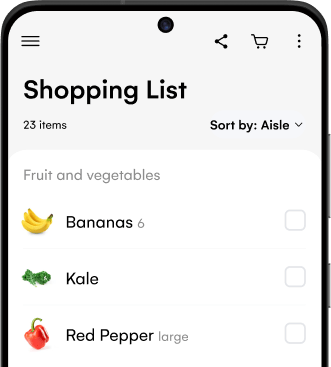Estimated reading time: 6 minutes
Nutrition and exercise are the two key components when it comes to building muscle. They both have different effects on the breakdown and the synthesis (growing) of muscle protein. Muscle is built when protein synthesis occurs more than breakdown. It may seem black and white but when digging into the research on this topic, it is not so simple. There are a few factors to consider, such as, the type of protein consumed, the quality and quantity of the protein, the type of exercise, length of exercise, and physical activity level of the individual.

What is protein?
Protein is a macronutrient and forms a major part of a healthy diet. Each gram of protein yields 4 calories and when protein is digested it breaks down into amino acids in our bodies. Amino acids are building blocks for protein and are important for many biochemical reactions. There are 20 amino acids but out of those 20, nine are considered “essential.” This means our bodies don’t make them, so we have to get them from food sources.
Analyse nutritional information for any recipe

Complete proteins contain all of the essential amino acids. It has been shown that providing a complete protein during exercise recovery is beneficial for muscle building. Protein is found in many different types of foods. Animal protein is the easiest and most common source of complete proteins. Beef, chicken, pork, eggs, fish, and cheese are all complete proteins. There are complete plant-based protein options such as soy, buckwheat, and quinoa. While beans, nuts, and seeds may not be complete proteins, they can be paired with other foods to make them complete. For example: rice and beans together give you all the essential amino acids.
Protein is also a huge contributor to satiety, so it is important to eat it throughout the day. Each meal and snack should include protein. The amount of protein needed daily is based on body weight and/or caloric needs but the range varies greatly depending on physical activity level. It is hypothesized that protein needs are higher in the beginning of someone’s muscle building journey than those that have been weight training for a while.
The “muscle full” concept
The “muscle full” concept is believed to be the ideal amount of protein needed for muscle building, which is anywhere between 20-25 grams of high quality protein, anything in excess is used towards other processes in the body.
The absorption rate of whey is about 10 grams per hour which is a lot faster than one of an egg (around 3 grams per hour). One study found that when 80 grams of quickly digested whey protein was consumed in a 12 hour period after resistance exercise, it was most effective when 20 grams of protein was consumed every 3 hours during that 12 hour time period.
On the flip side, one study focused on using whey protein, it was noted that the daily consumption of 80 grams was below the daily recommended range. It is important to take into consideration that most of these studies focus on a single protein and not a complete meal.
It’s easier to meet recommended protein needs when incorporating other foods rather than just one source of protein.
Muscle growth is dependent on the amount of protein consumed after exercise. There are a few things to take into consideration when recommending amounts of protein. Younger adults have different protein needs than older adults. It is also important to take complete proteins into consideration. Lastly, when protein is consumed in relation to exercise is a factor too.
Install free Chrome extension for easy recipe saving

Timing of protein and exercise
The research is currently mixed about protein timing and exactly how you should spread out your protein consumption. Your protein intake would typically be timed around your workout. But the time at which you eat it depends somewhat on the type of exercise. As well as your individual tolerance for eating during, before, or right after exercise. Protein and/or amino acids could be consumed before and during exercise. However, typically they’re eaten after to help with muscle recovery.
If you eat your protein before and during exercise, it provides the muscle with the amino acids it needs. The protein will also be readily available after exercise. There’s a window of around 4-5 hours after resistance exercise where consuming protein contributes to optimal muscle growth. However, research has shown that even after 24 hours of protein ingestion after exercise, muscles were still responsive in young adults.

While many of us focus on the amount of protein, it is important to understand that carbohydrates and fat impact muscle building too. Some studies show that adding carbohydrates and fat can slow down the release of the amino acids. Even though it may slow down the release of amino acids, eating a meal with carbs and fat along with protein is not necessarily less effective.
When carbohydrates are ingested with protein, insulin is released into the body. Insulin helps supply the muscles with amino acids, and it may also suppress the breakdown of the muscle tissue. The research remains inconsistent in terms of pairing fat with protein and the impact on muscle building.
Spreading protein intake throughout the day
While protein timing has long been a topic of discussion among athletes, it is also important to look at it from an everyday perspective. As mentioned above, protein is one of the three macronutrients that contribute to energy. Eating protein rich foods on a daily basis is important for everyone, not only athletes.
Protein is essential for many different processes in the body. Protein plays an important role in satiety, adding protein to each meal and snack may improve the satiety factor. What that means is you feel full for longer. When satiety is increased, caloric intake may be decreased and this may help with weight loss. A few studies have found that consuming a protein rich breakfast may help with satiety throughout the day. But that doesn’t mean you should only eat protein at breakfast!
Each individual has different protein needs based on their age, sex, physical activity level, types of exercise, and diet. The protein needs of a 25-year-old male that has been lifting weights for three years will differ to a 65-year-old sedentary male. This is why it is so important to have an individualized plan.

The verdict on whether you should spread protein
While the exact timing of protein differs from person to person, most experts are in agreement that you should spread your protein throughout the day rather than consuming large amounts all at once.
Using Samsung Food app can also be a helpful tool to find some high protein recipes since the nutrition information is readily available for each recipe. Remember to consult with your health care provider prior to making any changes to your diet and/or exercise routine.



